Teaching art online - a first attempt
How the fear of failure and concerns about my art being copied turned into a wonderful realisation that I can teach
I have just launched my first online lesson as part of a collaboration with Tamara Laporte who is known as Willowing Arts. Earlier this year Tam asked me to take part in her annual four month course called Kaleidoscope. She has been running Kaleidoscope for five years and this is the final year that it will happen. 16 artists created lessons on the theme of worldly wonders and inspirational people with the idea of also sharing colour inspiration.

My own procrastination over course creation was largely about fear. Fear of being able to understand the technology, fear of sharing too much of my own process, fear of film making. Fear of being rubbish at something is something everyone experiences but now was the chance to step up and get over myself.
Of course I said yes for a number of reasons. Firstly I had been following Tam on social media for some years and she is a very experienced collaborative teacher so the chance to work with another artist who really understands online course creation was too good an opportunity to refuse - but I was a bit scared.
My own procrastination over course creation was largely about fear. Fear of being able to understand the technology, fear of sharing too much of my own process, fear of film making. Fear of being rubbish at something is something everyone experiences but now was the chance to step up and get over myself. I’m so glad I did this. The theme could be easily adapted to my style of painting. I am a colourist and an intuitive painter and I felt that I had met with an ideal chance where I could offer something up that people might find enjoyable.
The course began with a series of free painting demos from each artist to inspire people to join in and to get to know the teachers and to see if the main course beginning in August 2024 would be a good fit for them.
I chose to create a simple to follow demonstration inspired by the words ‘I paint flowers so they will not die’ attributed to Frida Kahlo featuring four small paintings of abstract flowers.
Finding the best way to film presented challenges but as I chatted to other artists who have created online courses and took advice about filming set ups from You Tube I started to feel yes I can do this. Tam also provided a training pdf for teachers so the more I read the more confident I became.
In my shed I rigged up an iPad holder that faced down onto the table where I would be painting. The gadget was an Amazon find and is bolted firmly to one of the ceiling beams. There are so many things to think about when you film yourself painting. Trying to ensure the frame includes all of the paper you are working on and crucially ensuring you have charged the iPad fully before filming, having your art supplies to hand and so on.
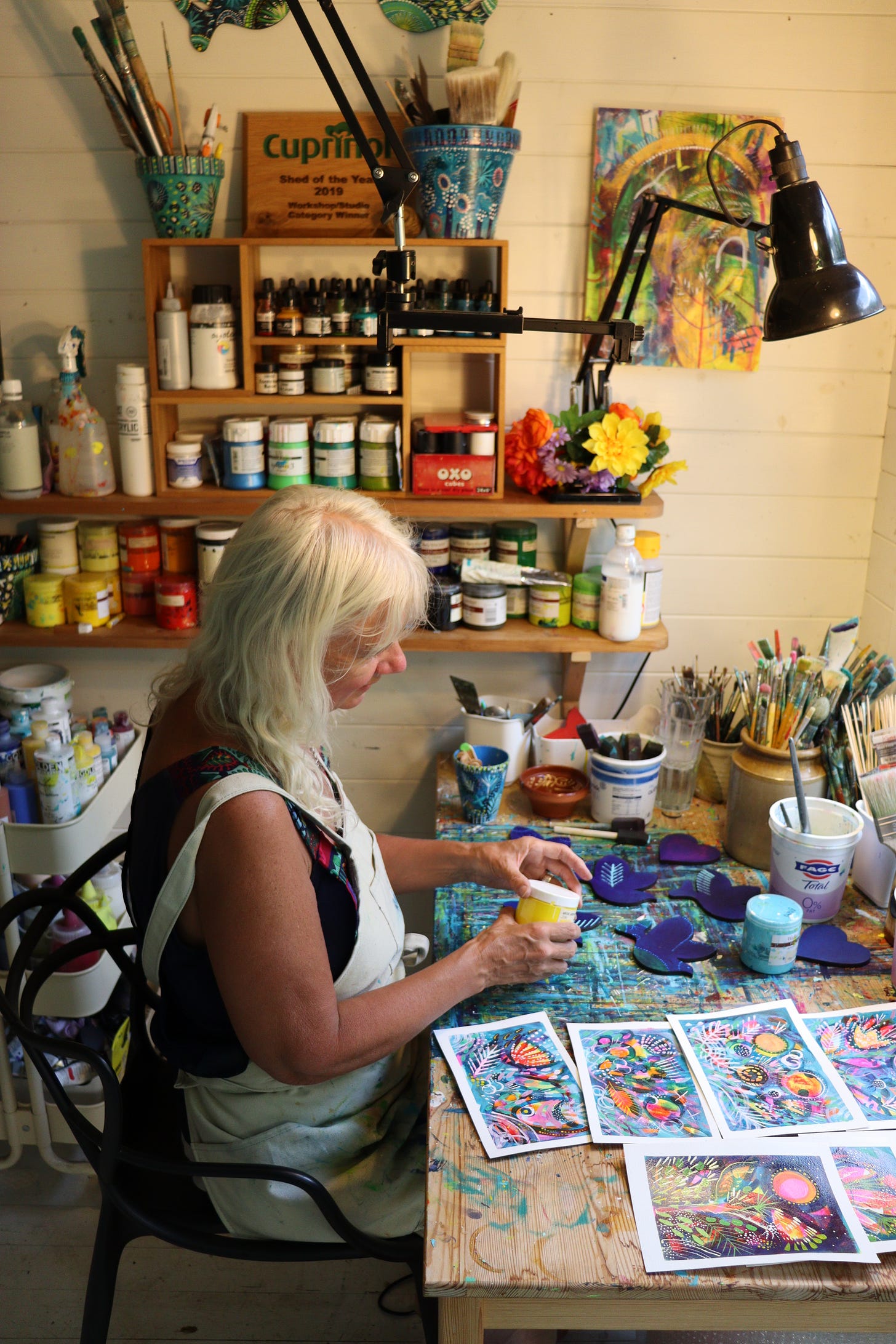
But as I started to paint after a while I forgot the film was rolling and just became immersed in making the painting. I decided not to talk as I painted because this would distract from the creative process. Also as I went along I began to understand that I wouldn’t need to keep everything filmed - boring bits like adding loads of dots could be sped up. Instances when I had to decide on a painting colour or select the next tool or brush to use and it appeared nothing was happening could be edited out. I just painted as I normally paint and let the camera record it all.
When I worked in Media Relations,what feels like a million years ago, I did a bit of very rudimentary editing so this is a process I had a little understanding of. I learned that it is important to shoot a lot film so the material is there. Dross can be edited out easily. Even making Instagram reels teaches you a little about this.
My lesson for the free taster lesson for Kaleidoscope featured masking a sheet of A3 paper into four sections and working on four little paintings. The thought here was to give students the chance to build a little series of interconnected paintings without feeling too connected to one painting. Doing this enables students to let go of outcome more readily. This is so important in my own painting process. The paintings are all about becoming immersed in building up layers of colour and marks not worrying about making a masterpiece every time.
Overly thinking about how it will all turn out from the outset stifles the ability to move a painting forwards. It takes time and practice to know this and I knew that students of all abilities and levels of experience would be taking part and I wanted to share how freeing yourself from the shackles of focusing on an end product often brings about surprisingly interesting results.
Once I had filmed the painting (and I had two takes because the first take didn’t work very well) I edited out the boring bits, speeding up some elements and being quite cavalier with cutting. Then I simply watched the film and talked about what I was doing and added what I hoped would be a helpful commentary to guide students through my process.
It was with some trepidation that I first looked at the comments in the Facebook group after the taster lesson went live. Putting yourself, your process and doing something for the first time is scary for many reasons. Would people get what they needed to make the work using my process? Did I make my instructions clearly? Would people enjoy the process? What would they create? Would I regret making my process so accessible if work that emerged looked just the same as my work?
What actually happened was extraordinary. I discovered that by sharing what I have learned through developing my process that people used the ideas to come up with creations that were absolutely personal to them and that my ideas were simply like a spark. I discovered that everyone has their own handwriting and that even those who copied the process closely created work that was absolutely their own. Some people used the process to create abstract artworks and landscapes as well as the abstract flowers that I demonstrated how to paint.
Students were inventive with art supplies supplementing my supply list with whatever they had to hand. Students asked me questions that helped me to understand better what to do next time when I create a lesson. I discovered that it is not necessary to be too prescriptive with supply lists, that sometimes people need more information in one area than another. Some like still photographs of each stage and others are happy to emulate whilst watching a film. Some supplies are not universally available in different parts of the world and everyone had different budgets.
But the comments mostly just blew me away. I discovered that I can teach. Let me say that again - I discovered that I can teach. Breaking out of my procrastination taught me something about myself that I had not explored and might otherwise not have known. One of the most wonderful comments was something along the lines of - I have taken many online courses, some by wonderful teachers who cannot paint and some by wonderful painters who cannot teach. You can do both. Talk about a confidence booster. Well thank you because now there is no stopping me.
Here are some of the paintings that students created inspired by my lesson.
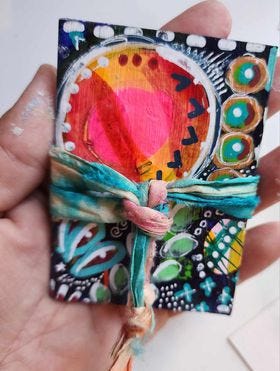

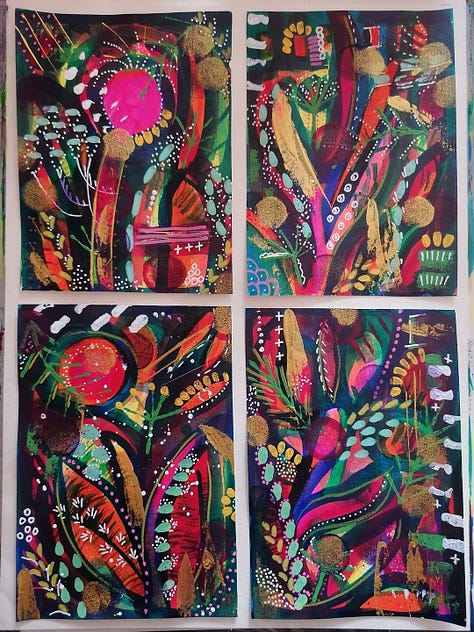
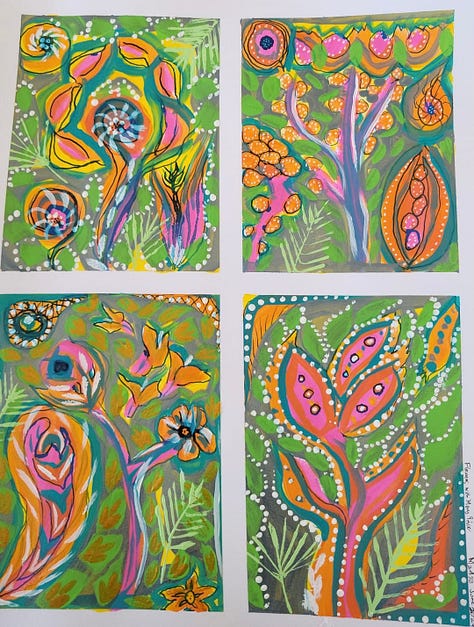
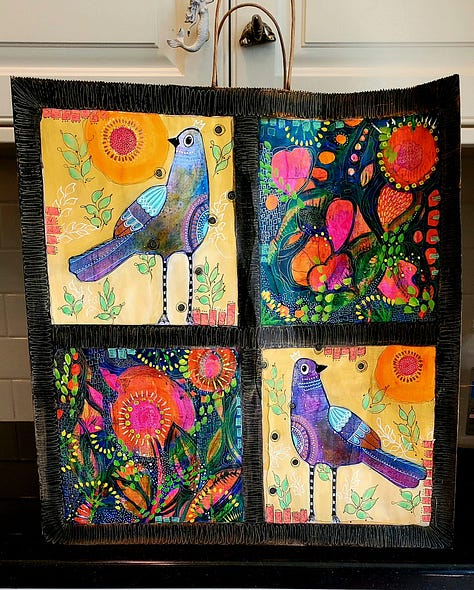
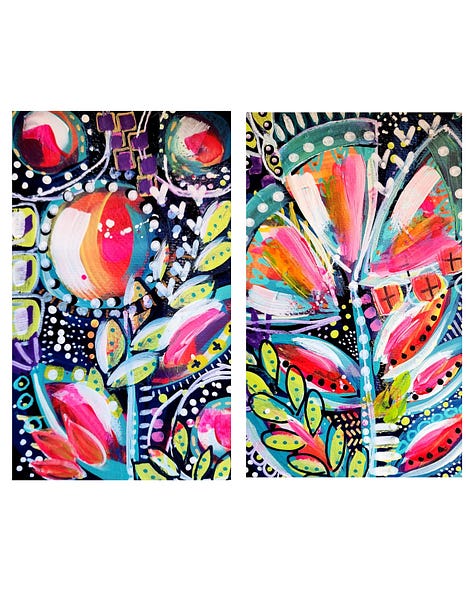
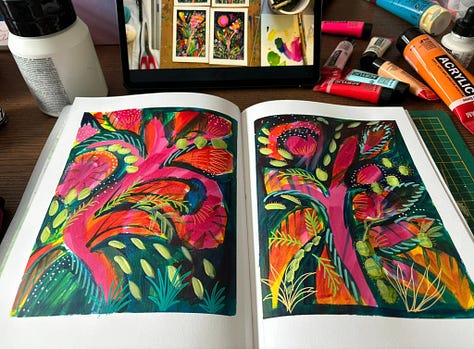
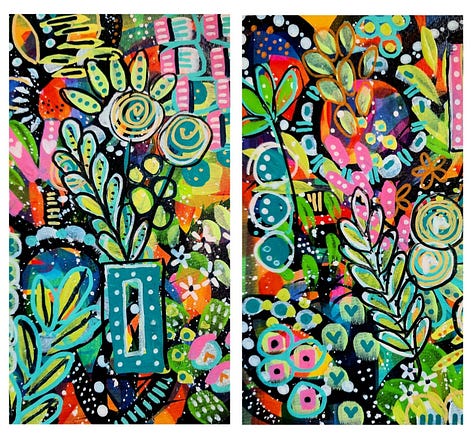
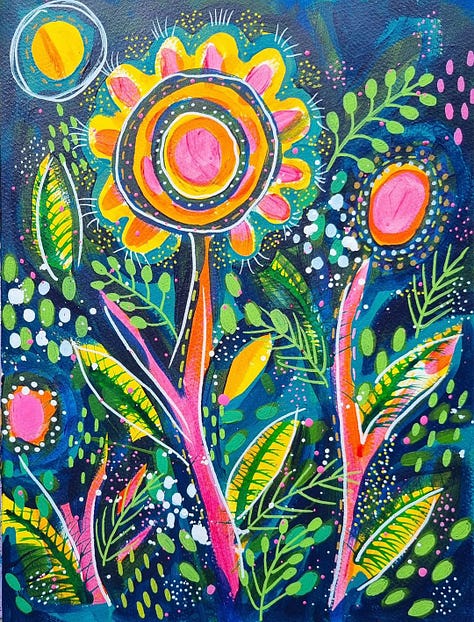
There were also some very encouraging comments by students in the Facebook group that have inspired me to make my own online course this summer. I just loved this comment (edited) by Heather
‘I just had to share the insights I gained whilst creating this painting inspired by Mary Price. This was a completely new process for me, and I oscillated wildly between loving it and hating it, and then, almost near the end I realised that painting in this way is life… Life starts (generally) as good and happy and bright, then out of nowhere the darkness comes and covers almost all of this light. But, and here's where the important bit lies. We can make new light, on top of the darkness, and in some way the darkness accentuates the light. Because we have seen such depths, we can see more colour and life. Thanks Mary!’
The FREE Kaleidoscope Taster lessons will be shown for a final time during the week commencing 23 July and the full four month course begins on 1 August 2024. Currently, at the time of writing this, there is an offer of 30% off the main paid for course if you quote the words WONDER30.
Find out more about Kaleidoscope 2024 and join in here





Love seeing how you’ve set up your camera and table Mary! That is always a tricky bit even when filming for reels and things too. Amazing work created by so many students! So wonderful to see more color and light in the world 💗 Thank you for sharing!
I can't believe this was your first video. You have inspired me to try to make one. Can you share what software you used, especially for editting?